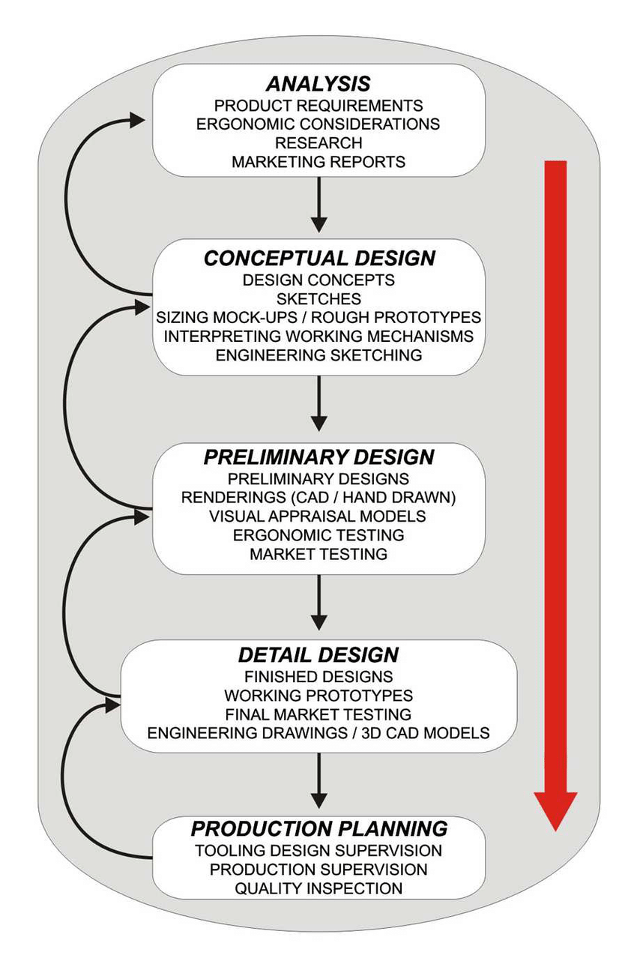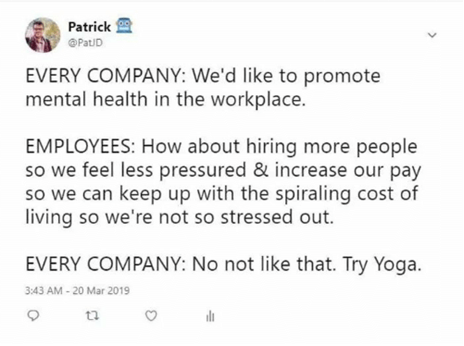You don’t want to open your sock drawer only to find it full of…. jeans? It’s frustrating to find something in the place you’d least expect it — the same holds true in the digital world —and Information Architects are dedicated to making sure you can find your “socks.”
We now live in a robustly populated digital landscape, making finding what you want, when you want, all the more important as things continue to become increasingly dense information.
Information Architecture, or IA, refers to the system of structuring, organizing, and labeling content. As the Information Architecture Institute puts it: “If you’ve ever tried to use something and thought, ‘where am I supposed to go next?’ or ‘this doesn’t make any sense,’ you are encountering an issue with an information architecture.”
IA establishes the foundation for all other UX development processes, including Content Strategy, User Interface (UI) Design, Visual Design, and more. You can also think of it as the skeleton of a project, ensuring everything is connected intuitively, holding the site together.
UX (or user experience) design refers to any interaction a person has with a product or service, which has become the foundational approach to product development in the digital world. With principles of Design Thinking at its core, user experience is centered as the central theme via a deep understanding of the target user and how they will interact with the product.
Effective IA will keep a user from getting exhausted trying to find what they need. Information Architects have to combine so many seemingly unrelated disciplines like psychology and library science — in addition to design and technical skills — to present something that allows a user to accomplish their goal without a second thought. The best IA is invisible.
Vive le Difference: UX Design + Information Architecture
UX design considers each component that shapes a person’s interaction with a product or service, encompassing a wide array of experience: from how it makes a user feel, to how simple it is for a user to accomplish their desired task, to how the product feels in their hands, to how easy it is to complete a transaction (particularly online). Information Architecture is a much more focused discipline, specifically dedicated to ensuring that users can find what they’re looking for seamlessly and intuitively.
Information Architects focus solely on the organization of information — not visual design or the “feel” of the experience. Sometimes the UX Designer is in charge of IA, but companies are starting to recognize the importance of having someone specifically dedicated to this increasingly important role.
What Does an Information Architect Do?
Information Architects works closely with the UX team to structure the information that the user will encounter. They often act as a bridge between the design and technical teams. Information Architects are integral contributors throughout a project’s development.
User Research
Knowing your users is key to understanding how they will interact with content. Information Architects utilize quantitative and qualitative data to figure out the best methods for organizing and labeling content. One popular process for analyzing user data is building personas, which are profiles of theoretical customers based on your target user base that examines their personality, behaviors, and motivations. Understanding who is interacting with your content and why can tell you how they interpret information and informs how to make the system most intuitive for them.
Defining Goals
Before building anything, the Information Architect needs clarity from both a user and business perspective on what the goals are for a given product. What is the result of successful user interaction? The clearer and more specific these named goals are, the more effectively you will map out the on-site tasks, create the most intuitive navigation, and yield the best results for the business.
Content Audits & Inventory
Developing user-friendly IA requires a content-first approach — building the product to purpose — it is integral to know what kind of content you will be organizing, both now and in the future. Once you know all the necessary components of the product, you can across content areas to help the user navigate those content options.
Systems & Navigation
The heart of IA is building systems of organization that include content hierarchies, labeling schemes, and navigational flows. Most folks approach this process by card sorting, which offers the opportunity to try out different categories and labels to find the best option.
Sitemaps & Wireframes
A sitemap is a visual representation of the content areas on the website and how they will relate to each other for a user navigating the site. Developing further, an Information Architect will put together a clickable wireframe that includes labels, navigation menus, and other system components stripped of visual design elements to ensure the rest of the UX team can work from a strong, working foundation.
Testing & Adapting
Testing ensures that the choices made in development stand up to scrutiny. User difficulties can reveal holes in the IA’s flow. Testing occurs during the prototype phase and again once the product or service is available to consumers. The end-product, over time, will be evaluated and re-evaluated using the same criteria to ensure that users can swiftly and and easily find what they need. This continued testing ensures that the IA stays relevant, adjusts to changes in the market and user patterns, and addresses potential shifts in business goals and strategies.
Principles of Effective Information Architecture
Pioneering Information Architect Dan Brown laid out his 8 Principles for Information Architecture:
- Principle of Objects — Not all content is created equal, and it is not always static. Treat it as if it is a living thing with unique lifecycles, behaviors, and interactivities.
- Principle of Choices — Offer the user choices that are meaningful and focused. You do not want to present them with so much information that the most straightforward option would be to leave your site!
- Principle of Disclosure — Give your user the information they need at that moment that will guide them to the next step. Be comprehensive, but don’t just dump it all at once. Again, the goal is not to overwhelm.
- Principle of Exemplars — Describe content categories by giving examples of what they will find in that category, providing a good sense of what they will encounter, even if someone does not know precisely what they may be looking for themselves.
- Principle of Front Doors — About half of users will hop onto a website directly to some page other than the home page. They may be heading to your site from a browser search or a social media link. Ensure these people can navigate the site from any page they drop in on, not just from the homepage.
- Principle of Multiple Classifications — Provide users various classification schemes with which to browse a site’s content.
- Principle of Focused Navigation — Navigational menus should be sorted by content — and it is easier for users if you break things down into multiple menus rather than one extensive, complex navigational system.
- Principle of Growth — Never assume that what you’re working on is the end product. It will almost certainly grow and change, and an IA built with that in mind will be much less of a headache to try and fix later on.
You Need These Attributes and Characteristics to Succeed at Being an Information Architect
Successful Information Architects have a knack for systems-oriented thinking. Equally important is a user-centered approach to the development process. Understanding how people think and process information is necessary to turn content and other data into comprehensive IA.
Inquisitive minds that readily apply what they learn are ideal in this kind of position.
As the field of content strategy is expanding to cover more specializations and responsibilities, companies are looking for folks with:
- Empathy
- Creative problem-solving skills
- Critical thinking skills
- Curiosity
Additionally, strong collaborative and communication skills make you a valuable contributor to any digital design team.
Qualifications
Data drives IA, so the ability to conduct testing and research and analyze and apply the information is necessary to succeed in this role. An Information Architect also needs a diverse understanding of industry standards for creating, storing, accessing, and presenting digital information.
There are many resources and courses available for folks interested in diving into the field of IA. If you think it might be for you, check this out to learn more.
Salary
The average salary for an Information Architect varies by experience, sector, and location. Information Architects typically make between $84,940 and $112,588. As of April 2021, the average salary in the United States was $98,320.
About the author.
An award-winning creator and digital health, wellness, and lifestyle content strategist—Karina writes, produces, and edits compelling content across multiple platforms—including articles, video, interactive tools, and documentary film. Her work has been featured on MSN Lifestyle, Apartment Therapy, Goop, Psycom, Yahoo News, Pregnancy & Newborn, Eat This Not That, thirdAGE, and Remedy Health Media digital properties and has spanned insight pieces on psychedelic toad medicine to forecasting the future of work to why sustainability needs to become more sustainable.


